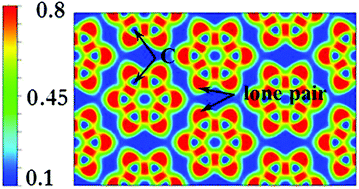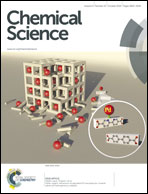Pressure stabilization of long-missing bare C6 hexagonal rings in binary sesquicarbides†
Abstract
Carbon (C) is able to form various bonding patterns, including graphene sheets, chains and dimers, but stable bare six-membered C6 hexagonal rings, which are the fundamental structural motifs of graphite and graphene have long been missing. Here we report the stabilization of such bare C6 rings under high pressures in the charge-transfer systems of binary sesquicarbides Y2C3 and La2C3 as predicted by first-principles swarm structure searching simulations. We found that the external pressure can be used to efficiently tune structural transitions in the sesquicarbides from the ambient-pressure cubic phases into high-pressure orthorhombic phases, accompanied by significant C–C bonding modification from C–C dimers to bare C6 rings and polymerized graphene-like double C6 sheets. The bare C6 rings are stabilized in Y2C3 and La2C3 at pressures above 32 and 13 GPa, respectively, which are readily accessible to experiments. Chemical bonding analysis reveals that the bare C6 rings feature a benzene-like sp2 C–C bonding pattern with a delocalized π system. Y or La → C charge transfer and the need for denser structure packing are found to be part of the underlying mechanisms behind the stabilization of the bare C6 rings.


 Please wait while we load your content...
Please wait while we load your content...